
Physician Assistants
Physical & Occupational Therapists
KneeMRI ScansNon-OperativePhysiatry
Physical Therapy
Podiatry
Spine
Sports Medicine
TraumaUrgent Care
X-Ray Imaging


We’re proud to announce that we're opening a new POA location in Hillsborough Township, New Jersey on February 13th!
Our Hillsborough Township Orthopaedic office will help our amazing orthopaedic team serve patients in Bridgewater, Somerset, Flemington, Piscataway, Edison, New Brunswick, Mechanicsville and all surrounding Hillsborough Township areas!
Our first day serving the HIlllsbourgh Township orthopaedic office will be on February 13th, 2023!
Princeton Orthopaedic Associates
Orthopedics and Physical Therapy
315 US Highway 206,
Hillsborough Township, NJ 08844
*It’s at the corner of Route 206 and Falcon Road.
Serving communities like Hillsborough Township with extraordinary orthopaedic care is one of our core values. We live in the community, so serving our community is part of our DNA. Princeton Orthopaedic Associates is committed to providing excellence to every patient we see. We do this with extraordinary talent, tools, and techniques. Our patients deserve the very best, and we constantly strive to exceed expectations and give excellent outcomes.
If you suffer from arthritis in your hands, you know how painful and debilitating it can be. It affects millions of people around the world, making everyday tasks difficult or even impossible to complete. In this blog post, we'll cover the causes and symptoms of hand arthritis, as well as what treatments are available to help manage the condition. The good news is that there are options for diagnosing and treating this condition.
Your first step should be to see your doctor or a specialist for a proper diagnosis. Once you know what type of arthritis you have, you and your doctor can develop a treatment plan that may include medication, physical therapy, and lifestyle changes.
With the right combination of treatments, you can start to feel relief from your symptoms and regain some mobility in your hands. Keep reading to learn more about diagnosing and treating arthritis in your hands.
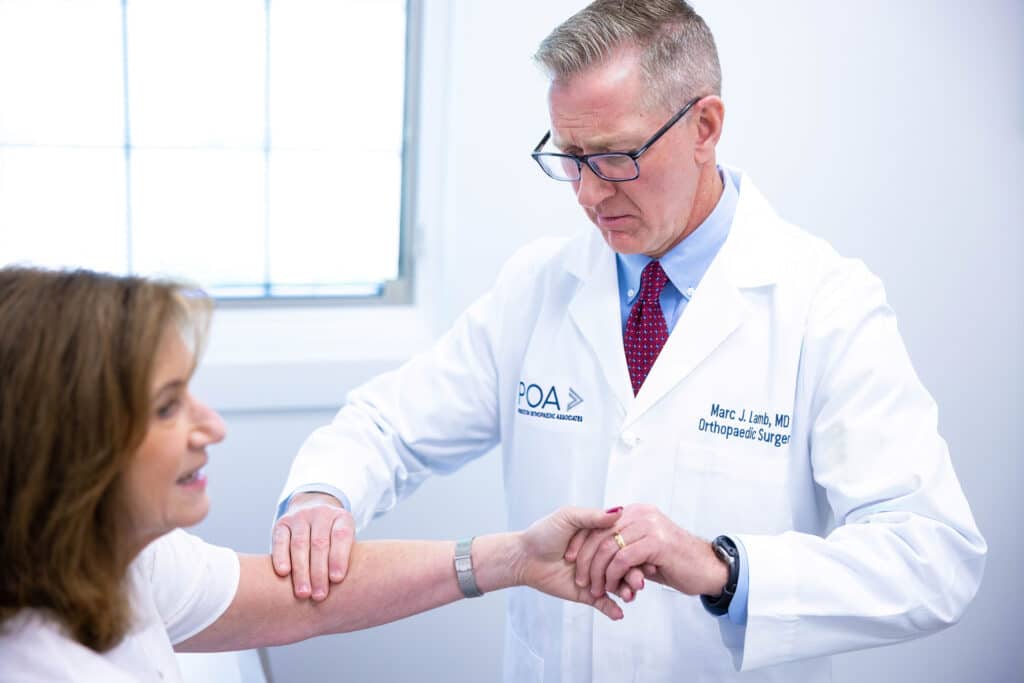
Arthritis is a general term for conditions that affect the joints and surrounding tissues. There are many different types of arthritis, and hand arthritis specifically refers to the inflammation of the joints in the hand. Symptoms of hand arthritis include pain, stiffness, and swelling in the affected joints. The symptoms can vary depending on the type of arthritis, but they typically worsen with activity and improve with rest. Treatment for hand arthritis depends on the severity of the condition and may include pain relief medication, physical therapy, or surgery.
Arthritis is a common condition that can cause pain and stiffness in the joints. The hands are especially susceptible to arthritis, as they are constantly in use and subject to wear and tear. There are many different types of arthritis, but the most common form is osteoarthritis. This type of arthritis is caused by the breakdown of cartilage, which is the tissue that cushions the joints. Other forms of arthritis include rheumatoid arthritis and psoriatic arthritis. Arthritis can affect people of any age, but it is most commonly seen in adults over the age of 65. Symptoms of arthritis include pain, stiffness, swelling, and reduced range of motion. Treatment for arthritis often includes medication, physical therapy, and splinting or bracing. In severe cases, surgery may be necessary to correct joint damage.
There are many different types of arthritis, but osteoarthritis is by far the most common form. Osteoarthritis occurs when the cartilage that cushions the joints begins to break down. This can happen for a variety of reasons, including aging, injury, or repetitive use. As the cartilage breaks down, it becomes thinner and less able to protect the joint. This can lead to pain, stiffness, and swelling. Osteoarthritis can affect any joint in the body, but it is most commonly seen in the hands, knees, hips, and spine. People with osteoarthritis often have a family history of the condition. Treatment for osteoarthritis typically includes medication, physical therapy, and splinting or bracing. Surgery may be necessary in severe cases to correct joint damage.
Rheumatoid arthritis is another type of arthritis that can cause pain and stiffness in the joints. Unlike osteoarthritis, rheumatoid arthritis is an autoimmune disorder that occurs when the body attacks its own tissues. This can cause inflammation and damage to the joints. Rheumatoid arthritis typically affects people between the ages of 40 and 60 years old. Women are more likely than men to develop this type of arthritis. People with rheumatoid arthritis often have a family history of the condition. Symptoms include pain, stiffness, swelling, and reduced range of motion. Treatment typically includes medication (such as corticosteroids or disease-modifying antirheumatic drugs), physical therapy, and splinting or bracing. Surgery may be necessary in severe cases to correct joint damage or deformity.
Psoriatic arthritis is a type of arthritis that occurs in people with psoriasis (a skin condition that causes redness, scaling, and inflammation). Psoriatic arthritis usually affects people between the ages 30 and 50 years old; however, it can occur at any age. Men and women are equally likely to develop this type of arthritis. People with psoriatic arthritis often have a family history of psoriasis or other autoimmune disorders (such as Crohn’s disease or ulcerative colitis). Symptoms include pain, stiffness , swelling , reduced range of motion , and nail changes . Treatment typically includes medication (such as methotrexate or biologic agents), physical therapy , occupational therapy , splinting or bracing , and surgery .

Arthritis of the hand is diagnosed by a combination of medical history, physical examination, and imaging tests. Blood tests may also be ordered to look for inflammatory markers. X-rays are often used to help diagnose arthritis of the hand, as they can show bone loss and joint damage. MRI or ultrasound may also be ordered to further evaluate the affected joints. Treatment for arthritis of the hand typically includes a combination of medication, splinting, occupational therapy, and injections.
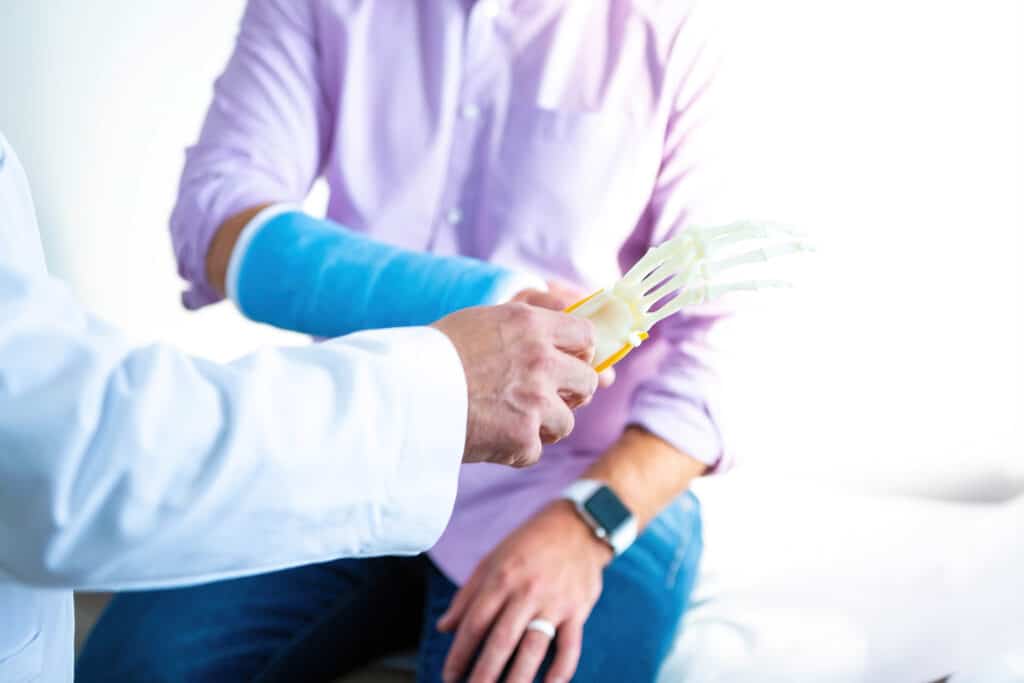
There are several different treatment options for hand arthritis, depending on the severity of the condition. For milder cases, over-the-counter anti-inflammatory medications can be effective in reducing pain and swelling. More severe cases may require prescription medication or injections. In some cases, surgery may be necessary to correct any damage to the joints. Physical therapy is often recommended to help improve range of motion and strengthen the muscles around the affected joints.
If you're one of the many people who suffer from hand arthritis, you know how painful and debilitating the condition can be. Even everyday activities like opening a door or writing can be a challenge. While there is no cure for hand arthritis, there are certain lifestyle changes you can make to ease your symptoms.
One of the best things you can do for hand arthritis is to keep your hands active and moving. This may seem counterintuitive, but stiffness and pain are actually worse when your hands are inactive. Exercise can help to increase range of motion and improve function. Just be sure to start slowly and listen to your body - if an exercise is causing too much pain, stop doing it.
It's also important to pay attention to your diet if you have hand arthritis. Eating anti-inflammatory foods like salmon, olive oil, and avocados can help reduce swelling and pain. At the same time, try to avoid inflammatory foods like sugar, bread, and pasta. Keeping a food journal can help you identify which foods are triggering your arthritis symptoms.
Making small changes in your lifestyle can go a long way towards easing the pain of hand arthritis. By keeping your hands active and eating an anti-inflammatory diet, you can help reduce swelling and stiffness.
There are a number of medications that can help relieve the pain and inflammation associated with hand arthritis. These include over-the-counter pain relievers such as ibuprofen, as well as prescription medications such as methotrexate. In addition, physical therapy and occupational therapy can be helpful in managing the symptoms of hand arthritis.
Severe cases of hand arthritis can be painful and debilitating for those affected by this condition. Life-changing treatments may be needed to alleviate the pain and improve function, and surgery is sometimes required as a last resort. Surgery can be an effective way to get relief from the discomfort caused by arthritis and can help individuals with this condition regain much of their mobility, allowing them to partake in activities that were previously difficult depending on the affected area. As with any surgery or procedure, it is important to discuss all available options with your doctor before deciding on which approach is best for you. Schedule an appointment with Princeton Orthopaedic Associates today so that we can help get you on the road to recovery.
Have you ever heard of turf toe? Chances are you’ve heard the term but don’t know exactly what it is. Turf toe is an injury to the ligaments around the big toe joint—also known as the first metatarsophalangeal (MTP) joint. It commonly occurs in athletes who play sports on artificial turf surfaces or hard natural ground. In this article, we will discuss its common symptoms, causes, diagnosis, treatment and prevention methods to help you better understand turf toe and how to treat it.
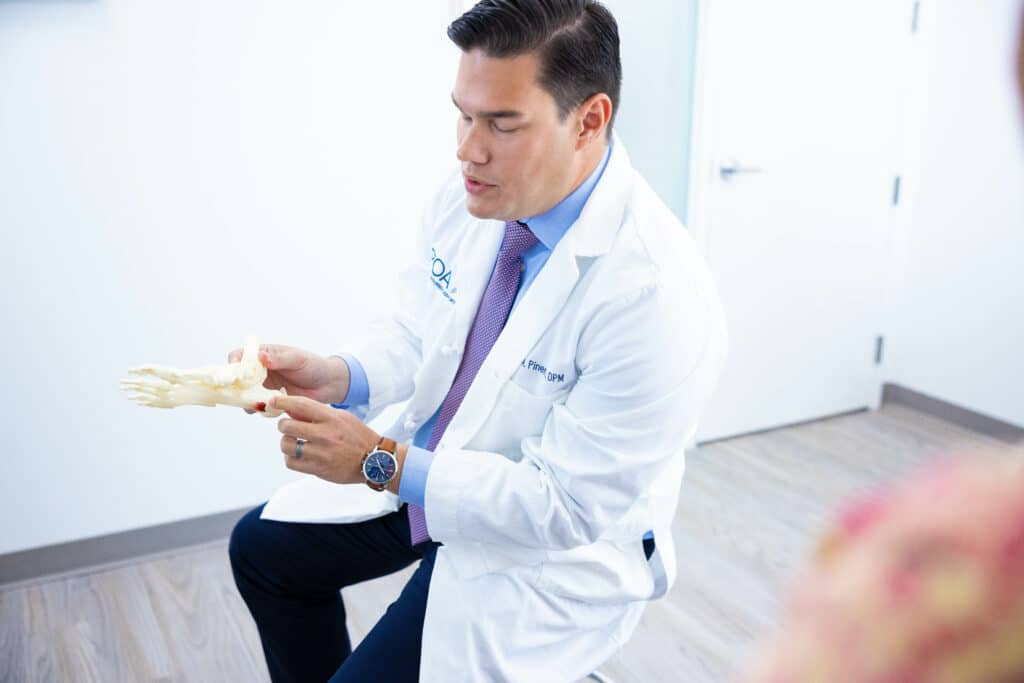
Turf toe occurs when the big toe joint is hyperextended backward beyond its normal range of motion. This puts excessive strain on the ligaments that connect the toes to the foot and can cause them to become severely overstretched or completely torn. The most common symptom of turf toe is pain along with swelling, bruising and a feeling of instability at the base of the big toe. Depending on how severe your injury is, you may also experience difficulty walking or bending your big toe.
Turf toe is an injury most commonly seen among athletes due to the sudden and sharp movements of quick turns, stops, and running. It often affects sports such as football, soccer, and basketball. The plantar plate located underneath the big toe can become overstretched or torn from these activities and cause extreme discomfort. Symptoms from turf toe include pain when walking on a hard surface, swelling in the area of the injury, decreases range or movement in your toe, and difficulty standing or putting weight on it. Diagnosis is usually done through physical examination coupled with imaging scans that are undertaken for further assurance. Treatment for turf toe can include icing the affected area, taking nonsteroidal anti-inflammatory drugs (NSAIDs), wearing a stiff-soled shoe with orthotics inserts to reduce strain on your toe, or even surgery in some severe cases. With the prevention of turf toe being difficult due to its spontaneous nature - regular stretching before exercise and building up strength in your foot can help reduce the likelihood of experiencing this type of injury.
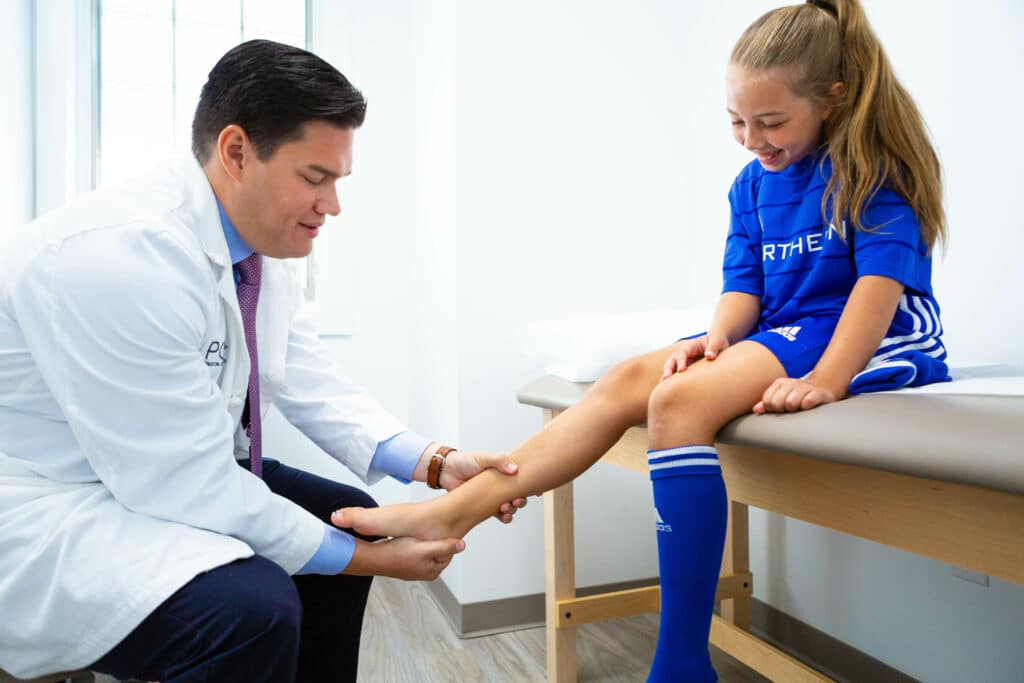
Turf toe is an incredibly uncomfortable condition that is common among athletes who participate in contact sports. The symptoms of turf toe can range from light pain and soreness to more severe cases of bruising and swelling in the front of the foot that can make it difficult for someone to put weight on their toes or bend them. Those affected by turf toe may find simple activities like walking, jumping, running, and changing direction unbearable, resulting in a need to take time off from athletic activities in order to recover. Treatment options include applying ice directly to the area as well as taking anti-inflammatory medications, but consultation with a doctor should always be the first step toward a successful recovery.
A diagnosis for a foot and ankle injury usually begins with a consultation with an expert in this type of surgery. During the appointment, they will ask several questions pertaining to your symptoms, daily activities, and medical history. Generally speaking, x-rays may be ordered if they deem it necessary to gain further insight into the severity of the injury. In some cases, MRIs may also be utilized on a grade 1-3 spectrum depending on the injury's degree. With these methods at their disposal, doctors can accurately diagnose and properly treat the problem in order to get you back to feeling comfortable again.
If you suspect that you have sustained a turf toe injury, it’s important to seek medical attention right away in order to prevent further damage and ensure proper healing. Your doctor will likely perform a physical examination and take radiographs (x-rays) in order to confirm a diagnosis. MRI scans may also be used if necessary in order to gain more information about your injury and determine its severity.
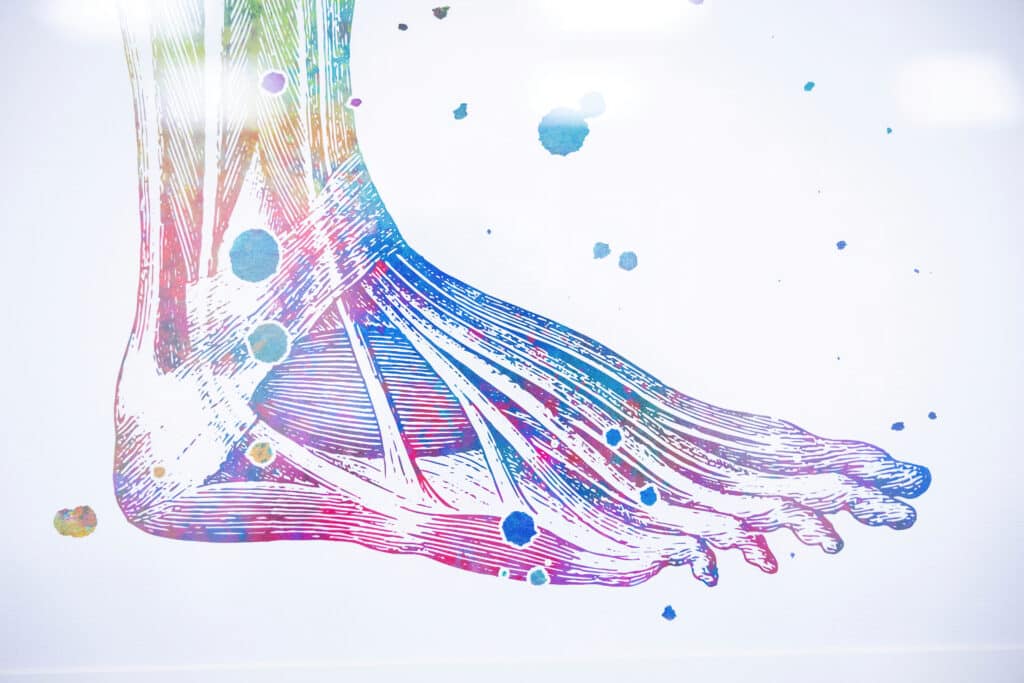
Turf toe is an injury commonly seen in athletes who participate in sports on artificial playing surfaces like football fields or track fields made from hard ground materials like asphalt or concrete. Its symptoms include pain along with swelling, bruising, and instability at the base of the big toe which can make walking difficult if left untreated for too long. Diagnoses typically involve physical exams as well as imaging tests such as x-rays or MRI scans. Treatment includes rest and ice therapy along with elastic compression bandages/elevation for swelling reduction as well as pain medications/taping techniques for additional support during activity/exercise; finally, proper footwear/supportive inserts should be worn during activities as preventive measures against future injuries due to their shock absorbing properties against hard surfaces made from artificial turf/asphalt/concrete, etc. By following these steps outlined above anyone experiencing symptoms related to turf toe should be able to properly diagnose and treat their injuries accordingly!
Additionally, an injury affecting the plantar plate as well is called plantar fasciitis. Plantar fasciitis is an irritation on the heel of the foot that can cause pain, redness, and swelling. Treatment methods for plantar fasciitis depend upon its severity but generally involve rest from activities that cause pain, applying cold packs three to four times a day, using elastic compression, and elevating the foot. Over-the-counter medications may provide relief from pain, while a taping technique using 1” and 2” athletic tape sprayed with adhesive onto skin following the protocol given by a physician or credible tutorials online can be used in certain cases. To prevent further injury, it's important to also wear adequate footwear providing arch support and extra padding if needed. With these treatments in place, most people with plantar fasciitis can avoid long-term complications associated with foot problems and manage their condition successfully.
Turf toe is an injury that is unfortunately all too common among athletes, as it often results from forceful upward motion of the heel beyond its design limits when the toe is planted on the ground. This movement can be especially difficult for athletes due to the intense physical activity that can occur during sports, where there may be a great amount of pressure placed on the toes and ankles due to sudden changes in direction and quickness. The most common way to prevent turf toe is to ensure that proper shoes are used while playing any sport, as they will provide adequate protection and cushioning while engaging in rigorous physical activity. Strengthening and stretching of the muscles around this area are also important to avoid overstretching or overextension while playing.
When it comes to treating turf toe injuries, rest and ice therapy are key components for reducing inflammation and pain levels while allowing time for healing. Elastic compression bandages or elevation can also help reduce swelling while providing support for your injured area. If needed, pain medications such as ibuprofen or acetaminophen can help reduce discomfort associated with the injury while taping techniques can provide further support during activity or exercise. Additionally, wearing proper footwear with adequate cushioning and supportive inserts during activities can help protect against future injuries by helping absorb shock from impacts with hard surfaces like artificial turf fields or tracks.
If you think you're suffering from Turf Toe, make an appointment with Princeton Orthopaedic Associates. We want to help you get back to your active self as soon as possible.
Rheumatoid arthritis (RA) is an autoimmune disease that affects the joints and causes pain, swelling, and stiffness. It is important to be aware of the early warning signs of RA in order to diagnose it and start treatment early. Those with a family history of RA have an increased risk for developing the condition, so it is important to be aware of the symptoms and get tested if needed. Let’s take a closer look at rheumatoid arthritis and how it can be diagnosed and treated.
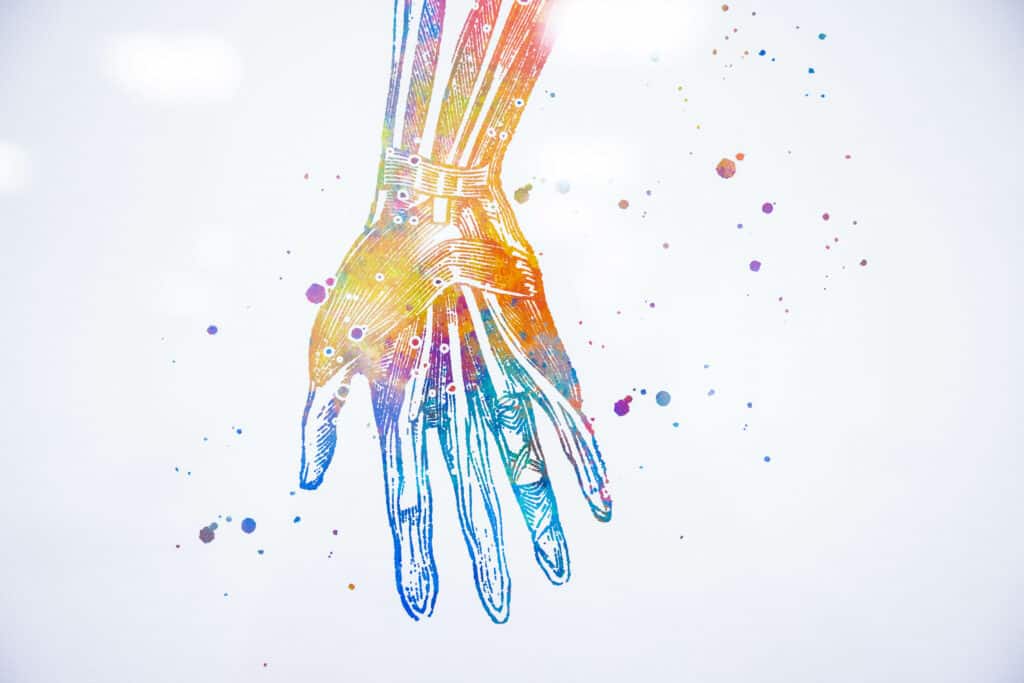
RA is a chronic condition, meaning that it typically lasts for the person's lifetime and can cause significant disability. The exact cause of RA is not well understood, but a combination of genetic and environmental factors is thought to play a role. Women are more likely to develop RA than men, and the disease usually occurs between the ages of 40 and 60.
Common symptoms of RA include:
Diagnosis of RA typically involves a physical examination, a review of symptoms, and a range of tests such as blood tests and X-rays. There is currently no cure for RA, but there are treatments that can help manage the symptoms and prevent further damage to the joints.
Treatment for RA may include medications such as nonsteroidal anti-inflammatory drugs (NSAIDs), disease-modifying antirheumatic drugs (DMARDs), and biologic drugs that target specific parts of the immune system. Physical therapy and exercise can also help improve joint function and reduce pain. In some cases, surgery may be necessary to repair or replace damaged joints.
Living with RA can be challenging, but with the right treatment and support, many people are able to lead full and active lives. It is important for people with RA to work closely with their healthcare team to develop a comprehensive treatment plan that meets their specific needs.
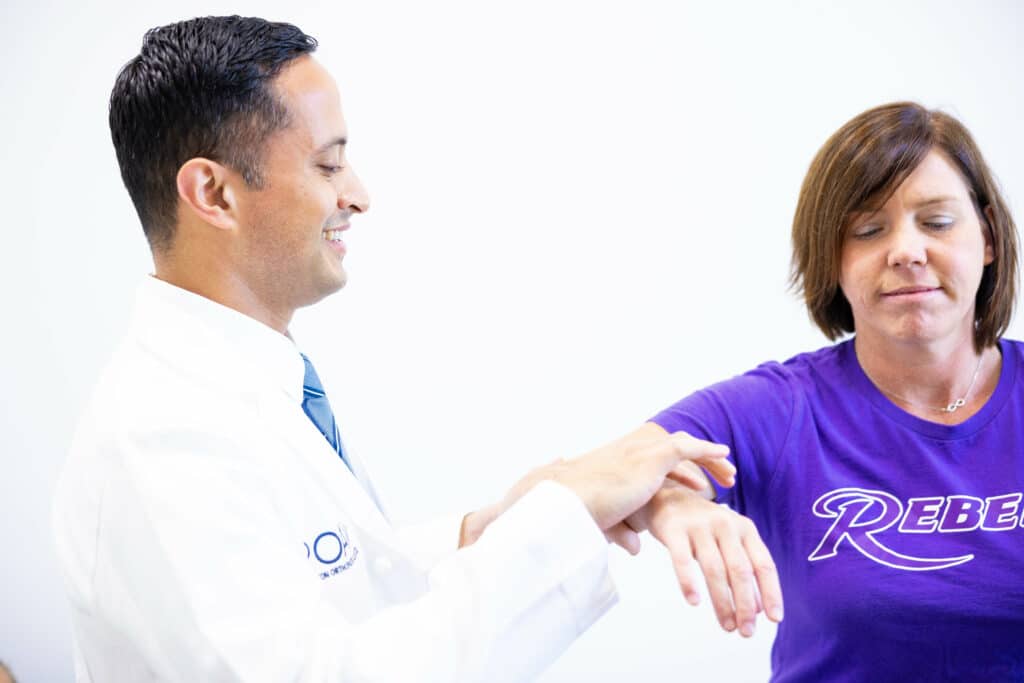
Rheumatoid arthritis is a debilitating autoimmune disorder that affects the protective soft tissues, cartilage, and bones in a person's joints. It is commonly characterized by painful swelling, stiffness, and difficulty moving joints in the hands, wrists, feet, and ankles. This can be a difficult situation to cope with for many people and those affected are likely to need ongoing medical attention throughout their life. Rheumatoid arthritis does not just affect someone physically; it can also take its toll emotionally. Patients may find themselves in a state of frustration or even depression, as the disorder often renders them unable to perform everyday tasks without great difficulty or pain. While this autoimmune disease cannot yet be cured, there are treatments available that may help to keep symptoms under better control.
In order to make an accurate diagnosis, your doctor will need to review your medical history as well as perform certain lab tests. Blood tests, such as a complete blood count or C-reactive protein test (CRP), are often used to measure inflammation levels in the body. Imaging tests, such as X-rays or MRI scans, may also be necessary in order to determine the severity of damage caused by RA.
A family history of rheumatoid arthritis can be a significant risk factor when it comes to personal health. Knowing what to look for in terms of early warning signs of the illness can make all the difference with diagnosis and treatment. Symptoms such as sudden or unexplainable weight loss and inflammation are key indicators that one should keep an eye out for if they have any familial ties with a particular ailment. Taking extra caution and being aware of potential risks associated with your family's medical background is a great way to proactively monitor your health. Making sure to approach any strange ailments head-on will lead you on the path towards better health.
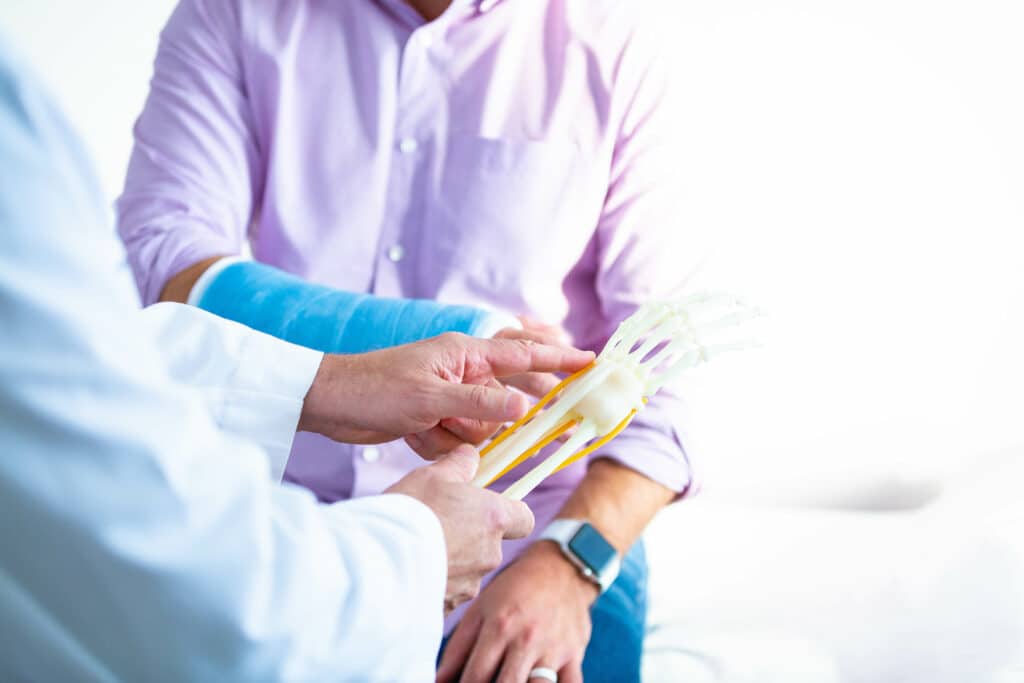
Rheumatoid arthritis (RA) is a serious autoimmune disorder, but with the right kind of care, it can be managed. early signs of RA include fatigue or tiredness due to inflammation, weakness in the hands and/or knees, significant morning stiffness that usually lasts more than an hour, symmetrical joint swelling as well as pain in both hands and/or knees. While all these signs can be symptoms of other conditions too, individuals who experience them should visit their doctor for an accurate diagnosis. With the right treatment plan in place, life with RA doesn't have to be difficult.
Once a diagnosis has been made, there are several treatments available that can help manage RA symptoms and slow down its progression. Medications, such as nonsteroidal anti-inflammatory drugs (NSAIDs) or biologics, are used to block chemicals released by the immune system during its attack on the joints. In addition, physical therapy can help strengthen damaged joints while surgery may be necessary if damage is severe enough. Unfortunately, there is no cure for RA yet; however, prevention is key when it comes to managing this condition – making healthy lifestyle choices like exercising regularly and eating a balanced diet can go a long way!
Unfortunately, there is no cure as yet for rheumatoid arthritis, making prevention an especially important factor. Fortunately, healthy lifestyle choices can help minimize the risk of developing this auto-immune disorder. For instance, it's important to maintain an ideal body weight and avoid smoking and periodontal disease - both of which are known to aggravate the symptoms. Additionally, if you suspect that you may have a joint condition or experience chronic pain in your joints then it would be wise to consult your doctor because while diagnoses of this type require lab tests and imaging, treatments involve blocking chemicals released by the immune system with medicine and physical therapy/surgery depending on how damaged the joints are. Therefore, by taking precautions today we can greatly reduce our chances of being affected by this debilitating illness in the future.
Rheumatoid Arthritis is a debilitating autoimmune disease that affects the joints, with pain and swelling as major symptoms. People with RA typically experience pain in multiple joints at the same time and can have a feeling of stiffness, tightness, and tenderness in their affected area. The affected joints may also have limited movement caused by swelling that happens with an attack or flare-up. More than just physical symptoms, this type of arthritis can produce feelings of low moods, fatigue and a decrease in overall quality of life. Early diagnosis and treatment can help people cope better with RA by offering remedies to reduce painful flares and providing support to manage daily life activities.
Millions around the world are diagnosed with rheumatoid arthritis every year. Early detection is key when it comes to managing this condition effectively – knowing your family history can help you identify any potential risks you may have for developing RA earlier rather than later. While there is no cure yet available for this condition, there are several treatments that can help manage its symptoms and slow down its progression. Making healthy lifestyle choices like exercising regularly and eating a balanced diet are also essential steps toward preventing RA from entering one’s life in the first place.
If you think you may be suffering from RA, you should make an appointment with us at Princeton Orthopaedic Associates for a consultation and diagnosis. Your body is telling you something through your pain and we want to help you discover the cause and find the right treatment plan that will get you on path to you feeling your best self. Give us a call today.
Are you dealing with uncomfortable or painful joint pain in your fingers? If so, you may be experiencing trigger finger, which is caused by inflammation and narrowing in the tendons around your finger joints. Fortunately, this condition can usually be treated effectively with some modifications to lifestyle habits as well as medical treatment. In this guide, we'll take a closer look at diagnosing and treating trigger finger to help you get back to living life without persistent joint pain.
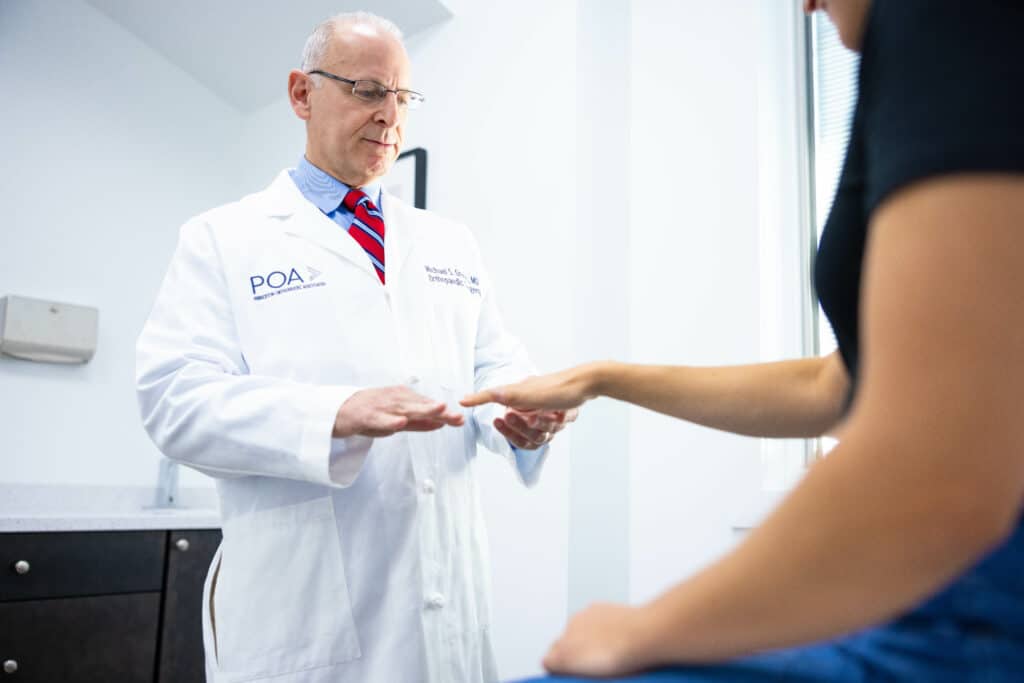
Trigger finger, also known as stenosing tenosynovitis, is a condition that affects the tendons in the fingers and thumb. It occurs when one of the tendons in the finger or thumb becomes inflamed and thickened. This makes it difficult for the tendon to move smoothly through its normal range of motion and can cause your finger or thumb to get stuck in a bent position. It may also cause a popping or clicking sound as you move your finger or thumb.
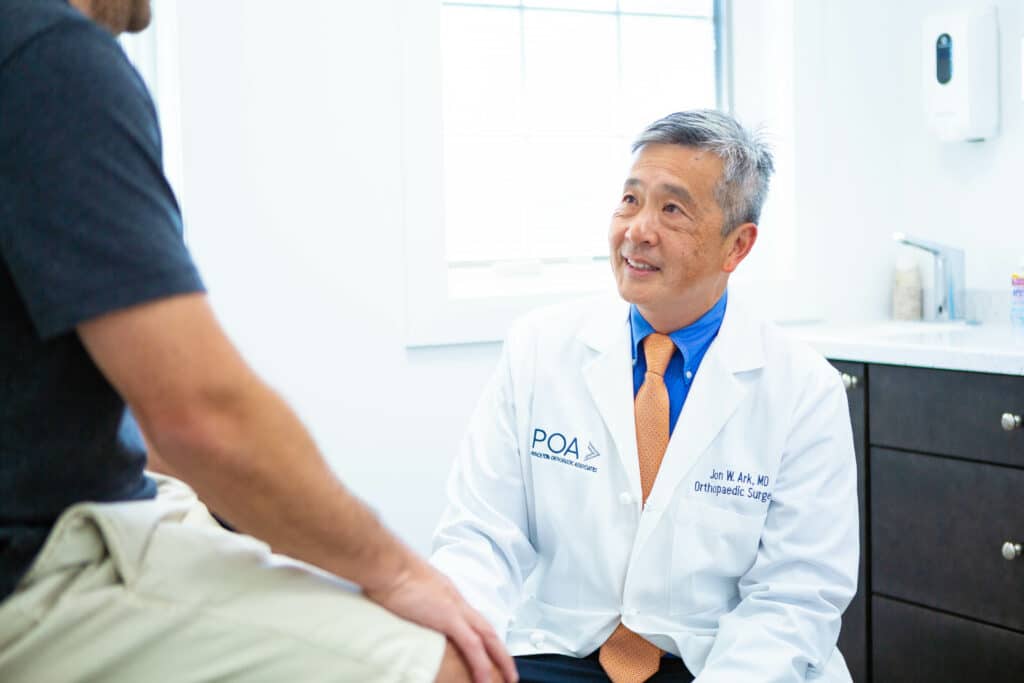
Common causes of trigger finger are repetitive activities such as typing or gripping tools with your hands for extended periods of time. If you think you may have symptoms of trigger finger, talk with your doctor right away so they can diagnose it accurately and provide appropriate treatment options. With proper care, most people with trigger finger can manage their symptoms and resume their normal activities without long-term issues.
The inflammation and thickening of the tissue that surrounds the tendons in the finger that causes trigger finger can make it hard for the tendon to move through its normal path and cause a sensation of “catching” or “locking” in the affected joint. Symptoms of trigger finger include pain in the affected area, difficulty straightening or bending the affected digit, and tenderness. If left untreated, trigger finger can lead to a permanent disability of the affected hand.
There are several possible causes of trigger finger, some activity-related and others related to the overall health of your body. Most of the activity-related causes are repetitive activities such as typing on a computer or playing musical instruments. Gripping an object too hard can also be a cause of trigger finger, particularly if the object is a tool that you have to hold and use over and over. If you work, say, in construction, then a hammer is a good example of this.
Other contributing factors have their origin in intrinsic health issues, especially inflammatory conditions. Inflammatory conditions are those occurrences that, obviously, cause inflammation in your body. That sounds ridiculous to explain, but sometimes the reality isn't so obvious. You may know that there are inflammatory diseases such as rheumatoid arthritis, gout, and lupus. But did you also know that diabetes, obesity, infections, and even pregnancy also cause inflammation? These conditions may affect your hands or fingers in the joints. You may also get trigger finger as a result of a trauma or an injury to the hand.
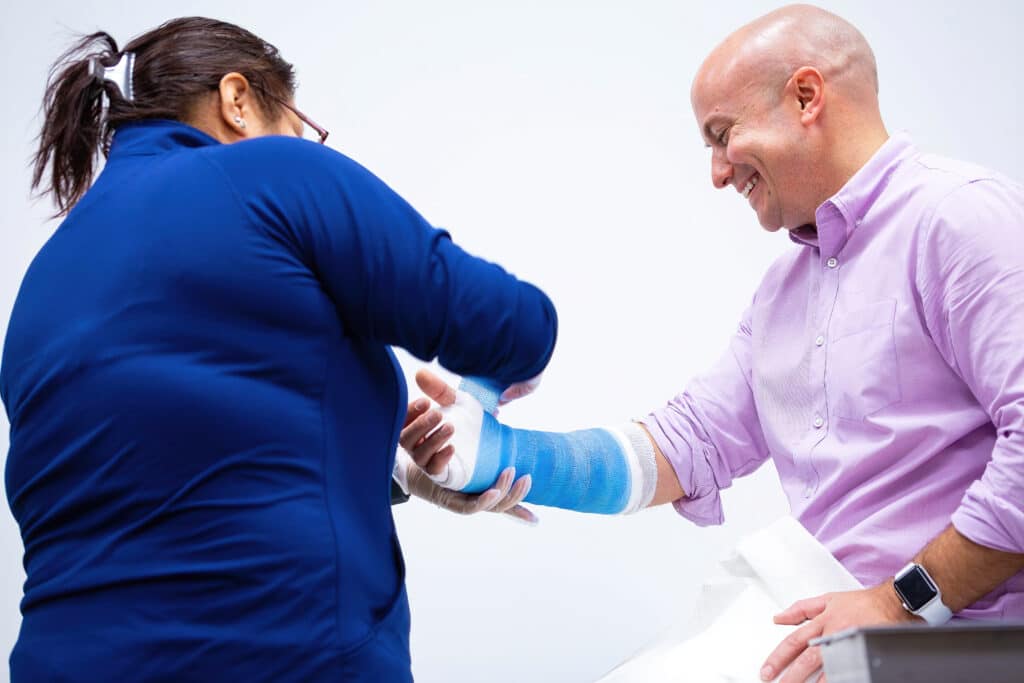
Symptoms of trigger finger can vary from person to person depending on what’s causing it, but typically include pain at the base of your affected fingers/thumb; stiffness when moving your finger/thumb; popping/clicking sounds when moving your fingers/thumb; and locking of your affected fingers/thumb into a bent position that can only be released with help from another person (known as triggering). Noticing your symptoms is the first step in diagnosis and treatment. The next step is to see a specialist who can help treat it.
Diagnosis usually involves a physical examination by a doctor or orthopedic specialist who will look at range of motion of your finger joints, examine your hands for redness and swelling, and listen to you tell your story about how this condition developed. In some cases an x-ray may be ordered to rule out other conditions with similar symptoms such as arthritis. Further tests such as an ultrasound may also be recommended to get a better look at soft tissues like joints and ligaments. Treatment options include conservative measures such as splints, cortisone injections, and physiotherapy; however, if these treatments do not work then surgery is considered to release the tendon from its sheath to restore mobility and reduce pain. The recovery period for this type of surgery is usually around six weeks with full recovery possible within twelve weeks.
In order to treat trigger finger, there are both lifestyle modifications and medical treatments available. Lifestyle modifications are the first step in treating trigger finger. Medical treatment includes corticosteroid injections into the affected area of the hand, splinting and bracing of your affected fingers during treatment, oral medications to reduce inflammation and pain relief from topical creams/ointments or over-the-counter medications such as ibuprofen. Surgery may also be required if other treatments fail to alleviate symptoms after several months of non-surgical management.
Treatment for trigger finger may involve lifestyle changes such as avoiding activities that cause strain on your hands, using braces or splints for support, taking medications to reduce inflammation, getting regular exercise for better joint flexibility, and stretching exercises specifically designed for hands. In some cases where symptoms are severe and don’t respond to nonsurgical treatments, surgery may be recommended to release the tight tendon sheath so that it can move more freely. Recovery time after surgery may take anywhere from six weeks to three months depending on how quickly you heal.
It is important to note that it is essential to seek medical advice if symptoms persist after trying lifestyle modifications as trigger finger can worsen over time if left untreated. Your doctor will conduct an examination and be able to determine the best course of treatment based on the severity of your condition. There are various treatments available for trigger finger depending on their severity; these range from avoiding activities that put stress on your hand to steroid injections or even surgery if necessary. One way to prevent developing a trigger finger is by regularly taking breaks from gripping tools or other such activities so your hands have a chance to rest.
Trigger Finger is an often painful condition that can affect the mobility of the fingers and thumb. It occurs when one of the finger's tendons becomes inflamed, causing it to catch or lock when straightened. People with trigger finger may experience catching sensations as they try to move their finger, pain in the palm of their hand near the base of their finger, swelling at the base of their finger, difficulty moving their fingers or a popping sensation when trying to straighten out a bent finger. This condition can interfere with normal activities like grasping objects or making a fist.
Fortunately, there are a few strategies for coping with and managing Trigger Finger. Strengthening exercises are among the most effective methods for reducing symptoms; these exercises involve squeezing small objects like putty or stress balls to increase tendon strength and flexibility. Avoiding forceful gripping activities such as using tools or playing stringed instruments can help reduce inflammation and discomfort. Wearing a splint at night that keeps your fingers in a slightly flexed position can prevent further irritation and allow for greater mobility during the day. Additionally, rest and ice are crucial components in managing this condition; resting your hands throughout the day and applying ice packs after strenuous activity can reduce swelling and pain associated with Trigger Finger.
If you have been diagnosed with Trigger Finger, it is important to speak to your doctor about treatment options that are right for you. In some cases, steroid injections may be used to reduce inflammation around the affected tendon sheath; however, this type of treatment should only be done under medical supervision due to potential side effects such as infection or nerve damage. Surgery is an option for more severe cases but should only be done if other treatments fail to produce results.
Although living with Trigger Finger can be difficult at times, having knowledge about possible treatments can help make living with this condition much easier!
If you experience any of the symptoms discussed in this article, make sure to connect with us here at Princeton Orthopaedic Associates to set up a consultation with one of our specialists. Trigger finger is a common condition that can be painful and impede functionality if left untreated. Although there are some medical treatments available, often times making simple lifestyle changes is enough to provide relief. With proper care, trigger finger can be managed so that it does not interfere with your quality of life. We can help you with all of that.

© 2023 Princeton Orthopaedic Associates. The contents of princetonorthopaedic.com are licensed under a Creative Commons Attribution-NonCommercial 4.0 International License. Copying without permission is strictly forbidden.